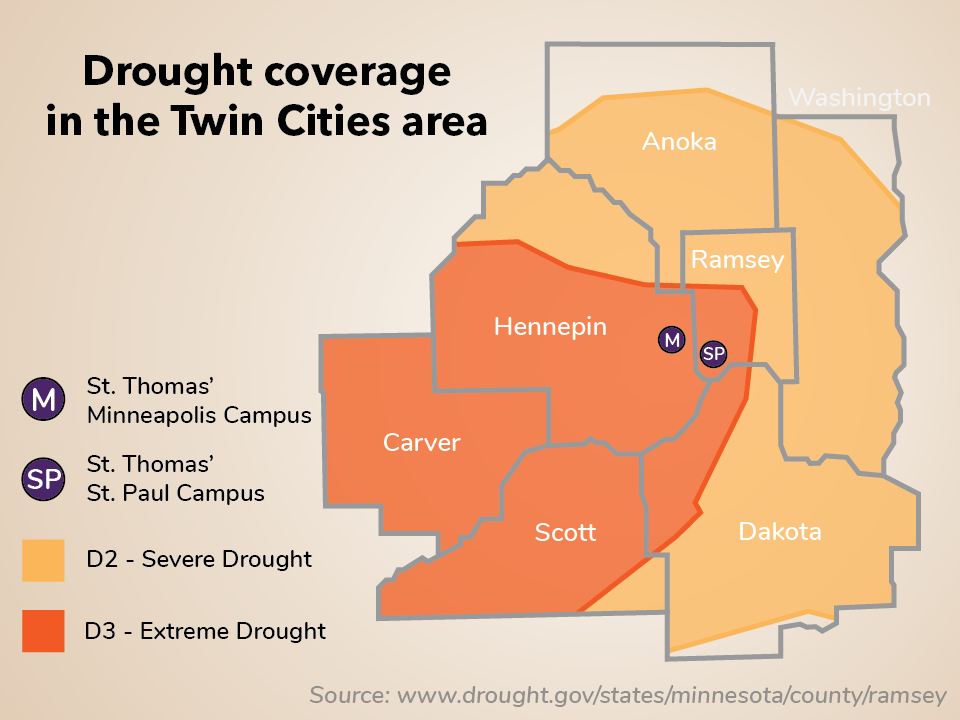
The U.S. Drought Monitor reported on Oct. 21 that over 78% of Minnesota is experiencing abnormally dry to severe drought conditions following its driest September on record, prompting extra irrigation efforts at St. Thomas to keep plants on campus hydrated enough to survive the winter, according to Director of Facilities Management Mandy Yang.
According to the Department of Natural Resources, 2021 was Minnesota’s most severe drought since 1998. Ongoing drought conditions like these can persist for over several years.
“The grass browned up pretty quickly with the lack of rainfall,” Yang wrote to TommieMedia via email. “We lost a few smaller trees.”
St. Thomas biology department and Earth, environment and society department associate professor Chip Small said that these periods of historically dry or wet years are effects of climate change.
“We see the extremes getting worse,” Small said.
As of Oct. 25, Ramsey County has accumulated 16 inches of rain in 2022, whereas the average precipitation in the county at this time of year is 26.89 inches, according to the DNR.
The drought prompted the DNR to urge Minnesotans, who use an average of 52 gallons of water per day, to use water conservation practices, such as water efficient appliances.
Small cited irrigation as an obstruction to water conservation.
“There are a lot of people who are using huge amounts of water just to water their lawns,” Small said.
For St. Thomas’ water conservation efforts, Yang stressed that both Tommie North and Frey halls are Leadership in Energy and Environmental Design certified, a global system that rates environmentally sustainable buildings. These buildings obtained this certification in water conservation for “installing low-flow water fixtures and an underground rainwater infiltration system.”
For other older, less efficient residence halls on campus, Yang emphasized the importance of reporting maintenance concerns like water leaks and only using water that is needed.
As for an end to the drought, Small said that it could get better or worse according to winter weather.
“A lot is going to depend on how big the snowpack is this winter,” Small said.
Small added that one benefit of the drought is less dead leaves flowing into lakes in the area, which usually makes phosphorus levels too high in the water. This decreases oxygen in water, leaving less for fish and other aquatic species to survive.
However, the negative effects of the drought ultimately outweigh the positive, according to Small.
“Overall, it is a little bit concerning to be in a serious drought,” Small said.
Anya Capistrant-Kinney can be reached at capi2087@stthomas.edu.

